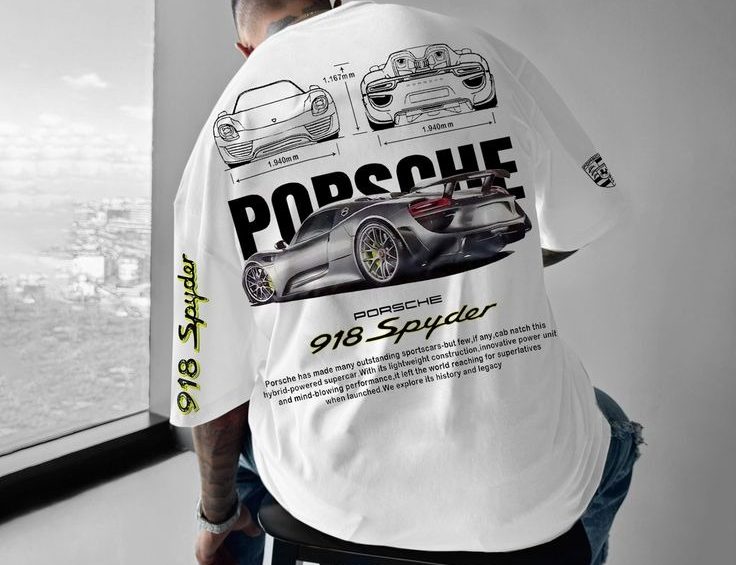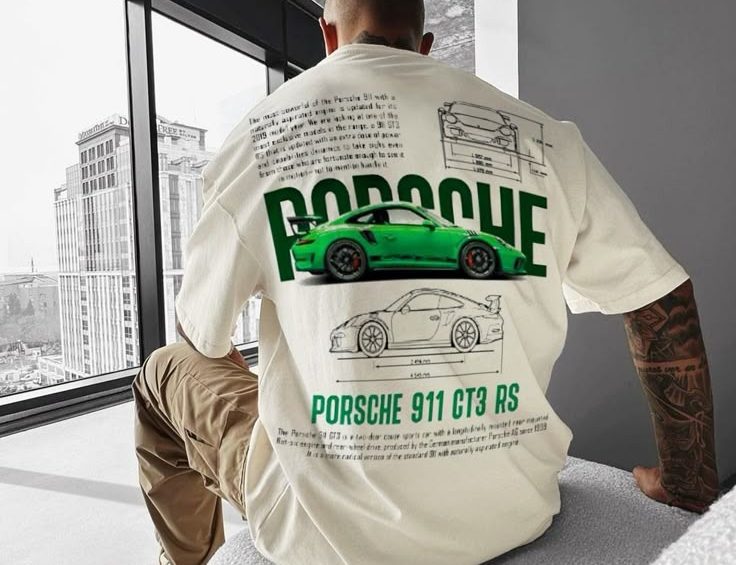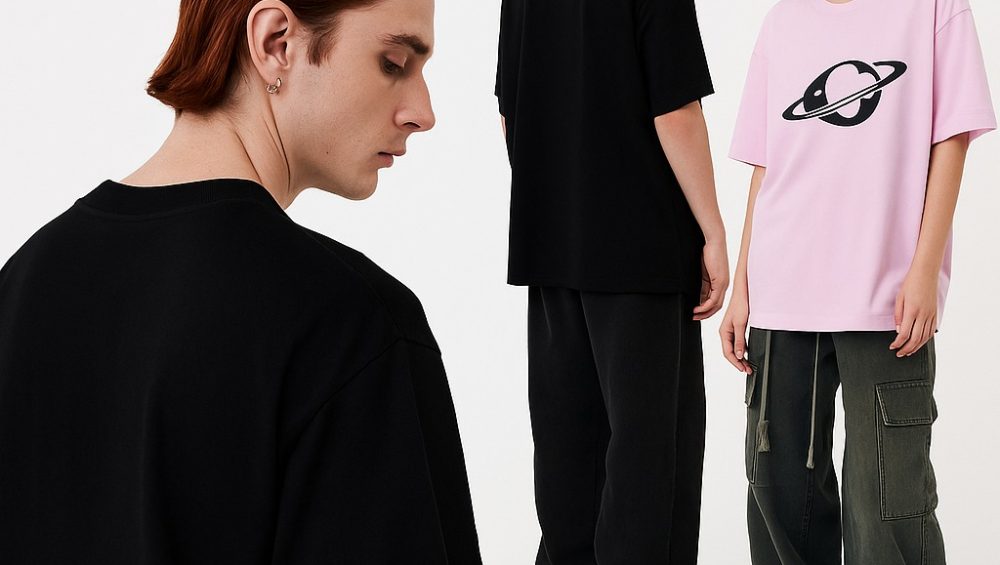Introduction
The T-shirt reigns supreme among wardrobe staples—ubiquitous, unpretentious, and endlessly reinvented. What began as a humble undergarment has become a global icon of comfort, creativity, and commerce. This expansive exploration delves into the T-shirt’s unforeseen rise, its profound cultural and commercial imprint, the environmental and technological crossroads it faces, and the countless ways individuals and communities have made it their own. Beyond mere fabric and thread, the T-shirt embodies shifting attitudes toward identity, sustainability, and innovation. As we chart its journey from 19th-century naval decks to tomorrow’s smart closets, we’ll uncover the forces that have transformed this simple garment into a complex cultural artifact—and glimpse the frontier that lies ahead.
An Unexpected Birth: Origins of the T-shirt
Long before it became a fashion staple, the T-shirt served a purely practical purpose. In the late 1800s, European navies issued lightweight cotton “undershirts” to sailors in sweltering tropical stations. Their loose weave facilitated airflow, while the soft cotton minimized chafing beneath heavy uniforms. Across the Atlantic, American soldiers in World War I adopted similar garments, unknowingly planting the seeds of civilian adoption.
The pivotal moment arrived in the 1920s when underwear manufacturers began producing one-piece “union suits” that buttoned down the front. Workers, seeking convenience, cut off the lower legs of these garments, creating what we now recognize as the T-shirt. Yet it wasn’t until the 1950s that Hollywood elevated the style. Marlon Brando’s bare-chested vulnerability in A Streetcar Named Desire and James Dean’s brooding cool in Rebel Without a Cause broadcast the T-shirt’s potential as outerwear, transforming it from unseen underlayer to visible cultural statement.
As postwar prosperity swept Western societies, textile mills ramped up production, coloring and shrinking cotton knits to meet burgeoning demand. By the 1960s, designers and activists realized the T-shirt’s blank canvas offered unprecedented avenues for personal and political messaging—ushering in an era when slogans, logos, and art could be worn as badges of identity.
A Garment of Revolutions: The T-shirt in Social Movements
The T-shirt’s malleability made it the perfect vehicle for protest and solidarity. During the Vietnam War era, anti-war slogans and peace symbols adorned tees passed among demonstrators. Students donned shirts emblazoned with “Make Love, Not War” or the iconic peace sign, turning their chests into billboards for counterculture ideals. Later, the civil rights and feminist movements harnessed graphic tees to amplify calls for equality: slogans like “Black Power” and “Sisterhood Is Powerful” underscored their wearers’ convictions.
In the 1980s and ’90s, T-shirts became synonymous with AIDS awareness. The red ribbon motif, screen-printed on hundreds of thousands of tees, signaled both mourning and defiance—drawing attention to governmental inaction and destigmatizing AIDS within mainstream culture. Pride parades around the world adopted vibrant, rainbow-washed designs, enabling LGBTQ+ communities to claim public space with joyful visibility.
More recent movements—such as environmental activism, #MeToo, and Black Lives Matter—continue this legacy. Wearers use T-shirts to broadcast solidarity hashtags, share QR codes linking to petitions, and memorialize activists who paid the ultimate price. In every instance, the T-shirt transcends apparel, emerging as a lightweight yet powerful tool for collective voice.
From Batches to Billions: The T-shirt Industry Today
The contemporary T-shirt market is nothing short of colossal. Analysts estimate the global market value at over $200 billion annually, with billions of units produced each year. Low production costs, ease of customization, and voracious consumer appetite for novelty drive this volume. Factories in Bangladesh, Vietnam, and India churn out mass-market tees for fast-fashion retailers, while micro-factories in the U.S. and Europe offer on-demand printing and small-batch runs.
Value chain segmentation is stark. At one end, “ultra-fast” brands turn designs from sketch to store shelves in as little as two weeks, leveraging just-in-time manufacturing and data-driven trend analysis. At the other, luxury fashion houses release limited-edition collaborations—some T-shirts retail for upwards of $500, embossed with couture logos and executed in ethically sourced fabrics. Between these poles thrives an ecosystem of streetwear labels, band merch operations, sustainable startups, and print-on-demand platforms catering to independent creators.
The rise of direct-to-consumer (DTC) models has further upended traditional wholesale channels. Social media ads drop new styles straight into customer feeds; integrated e-commerce and fulfillment services enable one-person brands to sell globally. Meanwhile, subscription “tee clubs” send curated packages of exclusive designs to members on a monthly basis—blurring the line between retail and entertainment.
Mastering the Market: Branding and Consumer Psychology
What makes one T-shirt fly off shelves while another languishes in clearance bins? The answer often lies in branding and the emotional resonance it evokes. Consumers don’t just buy fabric; they buy the story behind it. Strong brand identities distill values—authenticity, rebellion, sustainability, luxury—into visual cues and narratives.
Logo placement, typographic treatments, and even hang-tag design become signifiers of status or subculture affiliation. Minimalist labels might employ a tiny chest emblem and a matte black label to convey understated luxury, while streetwear brands blast oversized graphics and bold color blocking to signal youthful irreverence. Seasonal drops and “limited supply” messaging inject urgency, playing on the fear of missing out (FOMO).
Influencer collaborations amplify reach. When a high-profile athlete or a viral TikToker is photographed in a particular tee, sales spike almost immediately. Studies show that peer endorsement often outweighs price sensitivity; shoppers are willing to pay premiums for items that confer perceived social capital. Brands that master these psychological levers—community building, exclusivity, narrative—enjoy higher margins and deeper customer loyalty.
The T-shirt on Screen: Cinema, Television, and Celebrity
Screen culture and celebrity endorsements have long cemented the T-shirt’s cultural capital. From Steve McQueen’s rugged white tee in The Great Escape to Janis Joplin’s embroidered psychedelic tops, film and music icons have dictated tee trends for generations. Television shows like Friends and Seinfeld popularized character-driven merch, prompting fans to don shirts bearing Central Perk logos or “No Soup for You!” quips.
In recent years, streaming platforms have turned show-based tees into revenue engines. Original series release official merch lines timed with season premieres; fan-designed tees compete in online contests to be featured in digital pop-up shops. Celebrities themselves launch lifestyle brands centered around signature T-shirt motifs—think Rihanna’s Fenty staples or Gwen Stefani’s Harajuku Lovers graphics—further blurring lines between personal style and mass-market production.
Global Icons and Signature Designs
Certain T-shirt designs have transcended fashion cycles to become near-mythic. The “I ♥ NY” logo, conceived in 1977, remains a top-selling souvenir and cultural symbol of urban resilience. Band shirts—Pink Floyd, Metallica, the Beatles—signal musical allegiance and often outlive the original tours they commemorate. Athletic logos from Nike, Adidas, and international sports clubs adorn millions worldwide, forging instant links between wearers and global franchises.
Street art has also left indelible marks. Shepard Fairey’s “Hope” design for Barack Obama not only contributed to a presidential campaign but became a widely replicated motif on jerseys, tote bags, and tees long after election day. Contemporary artists like KAWS and Takashi Murakami collaborate with apparel brands to create collectible capsule collections, turning the T-shirt into wearable gallery space. These signature designs accrue secondary markets; rare vintage band or slogan tees routinely command high prices among collectors.
Environmental Challenges and Green Solutions
Despite its cultural clout, the T-shirt industry carries significant environmental baggage. Conventional cotton farming accounts for approximately 2.6% of global water use, and pesticide-intensive cultivation degrades soil health. Polyester production, reliant on petroleum, contributes to greenhouse gas emissions and microplastic pollution during wash cycles. End-of-life disposal further exacerbates landfill pressures, as many tees are discarded after only a handful of wears.
In response, innovators pursue multiple strategies:
-
Regenerative Agriculture: Cotton grown with crop rotations and cover crops enhances biodiversity and soil carbon sequestration.
-
Closed-Loop Recycling: Companies like Renewcell transform textile waste into pulp for new fibers; others use chemical recycling to depolymerize and reform polyester.
-
Waterless Dyeing: Techniques such as supercritical CO₂ dyeing eliminate traditional water baths, cutting water use by up to 100%.
-
Biodegradable Polymers: Research into PLA (polylactic acid) and other compostable materials aims to yield tees that safely disintegrate under industrial composting conditions.
Certification programs—Global Organic Textile Standard (GOTS), Bluesign, Fair Wear—provide supply-chain transparency, enabling conscientious consumers to support brands meeting rigorous environmental and labor standards. Yet scaling these solutions remains a challenge, as sustainable inputs often carry higher costs that ripple through global supply chains.
Innovative Technologies: Smart Tees and Beyond
The next frontier in T-shirt evolution marries textiles with electronics. Researchers and startups are embedding conductive yarns, micro-LEDs, and flexible sensors directly into knit fabrics. Applications range from fitness tracking—heart rate, respiration rates, posture detection—to interactive design, where built-in LEDs can change color or pattern via smartphone app.
Challenges include washability, battery integration, and data security. Companies are experimenting with detachable modules, wireless charging, and even energy-harvesting textiles that convert body heat or movement into power. Meanwhile, augmented reality (AR) markers printed on tees can trigger digital animations or offer virtual try-on experiences in retail stores.
On the manufacturing side, 3D knitting machines promise zero-waste garment production. By knitting tees to exact body measurements on demand, brands can bypass traditional cut-and-sew processes entirely, eliminating pattern waste and reducing inventory risk. As these technologies mature, the T-shirt may transform from passive attire into a seamlessly connected component of the Internet of Things.
The Art of Personalization: DIY Culture and Niche Communities
While global brands churn out mass-market designs, grassroots creators harness the T-shirt’s customizability to carve out niche communities. Platforms like Etsy and Teespring empower independent artists to upload graphics and sell print-on-demand products without inventory overhead. Niche fandoms—podcast listeners, tabletop gamers, niche sports leagues—produce micro-runs of inside-joke tees that deepen communal bonds.
DIY enthusiasts employ tie-dye, bleach-splatter, embroidery, and patchwork to create truly one-of-a-kind pieces. Workshops and pop-up studios teach participants to screen-print their designs onto blank tees, blending artistic practice with social interaction. Street fairs and zine fests often feature live printing stations, inviting passersby to co-create tees on the spot. In these contexts, the T-shirt becomes both canvas and participant in a dynamic cultural exchange.
Crafting Durability: Care, Maintenance, and Heritage
A sustainable relationship with T-shirts begins at home. Proper laundering—cold water, gentle detergents, inside-out washing—extends garment life and preserves graphics. Air-drying on flat racks prevents misshaping, while simple mending techniques can repair small holes before they grow. Some brands even offer “repair kits” with matching thread and patches, encouraging consumers to become active caretakers of their clothing.
Vintage T-shirts—whether iconic concert tees or scarce streetwear releases—often command premium prices because they’ve survived decades of wear. Collectors prize the “lived-in” patina of a well-worn graphic and the authentic tears of age. In this way, durability and visible history become part of a garment’s allure, challenging the throwaway mentality of fast fashion.
Collaborative Cultures: Streetwear, Luxury, and Hybrid Models
Cross-industry collaborations have redefined what a T-shirt can signify. Streetwear brands like Supreme team up with high-end fashion houses—Louis Vuitton, Dior—to produce capsule collections fusing skate culture with couture craftsmanship. Pop stars collaborate with sportswear giants to launch limited-edition drops, harnessing music’s emotive power to sell out collections in minutes.
These hybrid models often rely on blockchain technology for authentication, issuing digital certificates with each purchase. Secondary markets blossom on resale platforms, where “deadstock” tees trade at substantial markups. The exclusivity and collaborative pedigree confer status akin to art collectibles, illustrating how the T-shirt can straddle the domains of mass consumption and high-end luxury.
The T-shirt’s Role in Athletic Performance and Health
Beyond fashion, T-shirts engineered for athletic performance play crucial roles in sports and wellness. Moisture-wicking polyester blends move sweat away from the body, while antimicrobial finishes inhibit odor-causing bacteria. Compression tees support muscle groups and improve circulation, aiding recovery and performance. UV-protective fabrics shield outdoor athletes from sun exposure, and seamless constructions minimize chafing during endurance activities.
Medical applications are emerging as well. Researchers are prototyping T-shirts with integrated sensors to detect respiratory anomalies, heart irregularities, or changes in posture—potentially offering non-invasive health monitoring for patients with chronic conditions or seniors aging in place. As textile science advances, performance and healthcare converge on the T-shirt platform.
The Future Fabric of Fashion: Predictions and Possibilities
As we look ahead, several trends suggest where the T-shirt might venture next:
-
On-Demand Microfactories: Distributed knitting and printing hubs in urban centers will enable hyper-local production, slashing delivery times and carbon footprints.
-
Circular Business Models: Subscription services that reclaim, refurbish, and resell pre-worn tees will become mainstream, incentivizing brands to design for disassembly and recycling.
-
Biometric Adaptive Textiles: Fabrics that adjust breathability or insulation in response to body temperature, creating dynamic comfort layers without additional garments.
-
Digital-Physical Hybrids: NFTs tied to physical T-shirts granting owners access to virtual events, exclusive content, or augmented reality experiences—blurring reality and the metaverse.
-
Collaborative Design Platforms: Consumers co-create limited-edition runs through interactive apps, voting on colorways, graphics, and fabrics in real time.
While no single vision will define the next chapter, one constant remains: the T-shirt’s capacity to absorb and reflect cultural change. As attitudes toward sustainability, technology, and personal identity evolve, the T-shirt will continue to serve as both barometer and catalyst.
Conclusion
From naval underwear to digital-era statement piece, the T-shirt’s trajectory is a testament to fashion’s power to fuse function, identity, and innovation. Its enduring appeal lies in democratic design: anyone can wear it, anywhere, and imbue it with their own meaning. As manufacturing models transform, sustainability imperatives intensify, and technology redefines garment potential, the T-shirt stands poised at the nexus of past, present, and future. Whether you’re an activist printing protest slogans, an athlete optimizing performance, a designer pioneering smart textiles, or a hobbyist crafting your own tie-dye artwork, the T-shirt remains an open invitation—to express, to experiment, and to evolve alongside the world it reflects.








